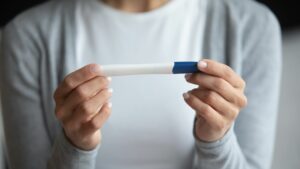Fertility doctors depend on science to make treatment decisions.
When the natural processes involved in producing a child fails at some point along the way, we can use medical science to increase your chances of having a baby.
If you are in your 20s or 30’s, and have been infertile for a couple of years, your chances of conception in each month may drop from the usual 15-20 percent to 1-5 percent, depending on what the problem is.
In some cases when you are trying to conceive naturally, there is a real wall and you have no chance. These are unusual cases, such as women with no tubes, or men with totally absent sperm.
Many couples with low success will finally achieve success. This is not a surprise. Sometimes the occurrences are commonly associated with alternative methods such as taking vitamins or “visiting a healer.” The reinforcement of the unexpected pregnancy can result in patterns of superstitious behavior.
It is best to look at scientific controlled studies when considering the use of various remedies. A current example is the use of CoQ10. It has been shown to help the fertility of some older rats. However, it has never been used scientifically in humans. So could it work? Maybe. How much would you take, and for how long?
You need to be aware of how much scientific evidence there is for any treatment.
Every community now has well trained infertility specialists. You now have the benefit of many scientific studies to enhance your possibility of pregnancy.
Reproductive medicine continues to evolve as studies become stronger each year. Another example is the use of DHEA for low ovarian reserve. There are 15 years of studies, but only one small randomized trial to prove it helps fertility. It’s inexpensive and relatively risk free. In this situation the moderately strong evidence seems to favor its use.
Fertility pills and insemination can give more eggs each month and more sperm introduced into the reproductive tract than are possible with intercourse. The pregnancy rate can triple or more and approach 20 percent.
In the 21st century for reasons discussed elsewhere, injectable drugs with IUI are not a good choice. There is too much cost and risk, so it’s better to move on to IVF for most of our patients, particularly since we offer low cost IVF.
If easier treatments, including IUI, don’t work for you, then it is time to consider IVF, which is a complex method to enhance the opportunity for a sperm to meet an egg.
Huge efforts by many doctors and embryologists as well as drug companies have put us in a position to beat Mother Nature’s odds by doubling the chance that your fertile peers may have. No matter what your path, the journey involves a lot of work and perseverance. If you need IVF, the monthly conception rates can be as high as 40%, doubling Nature’s odds.
If you have questions about your best path to conceiving and having a baby, contact us here.






